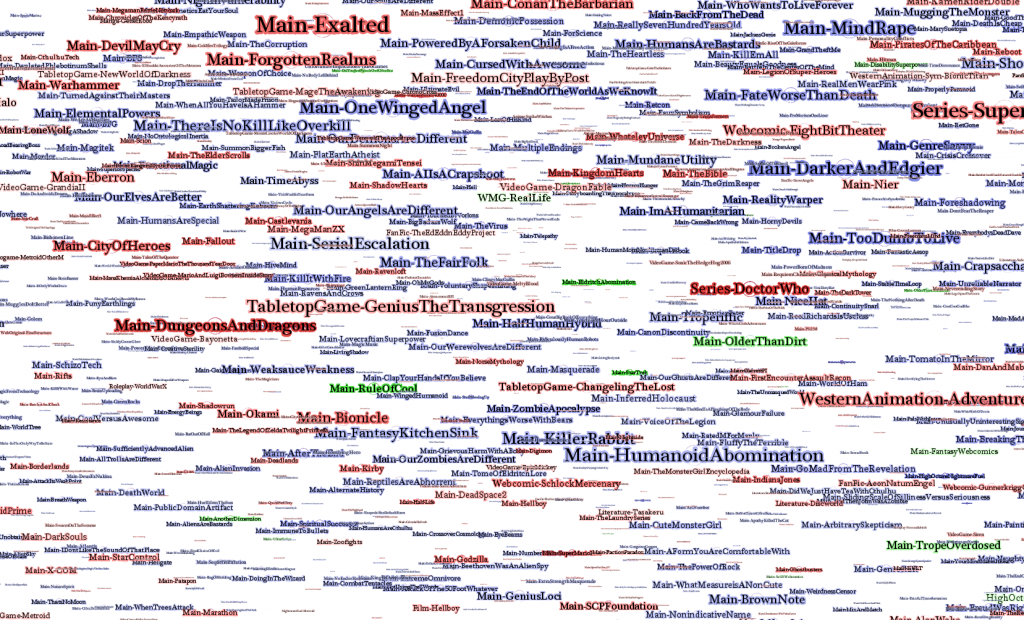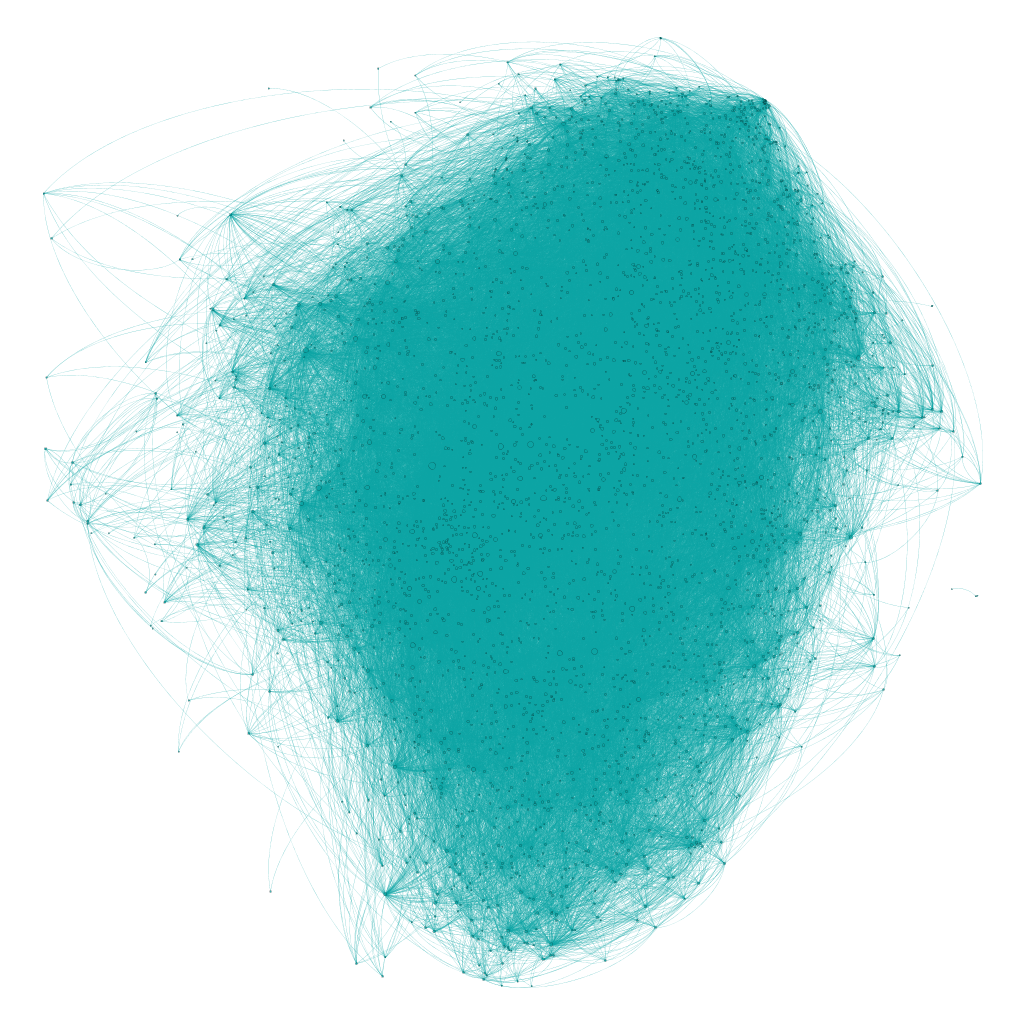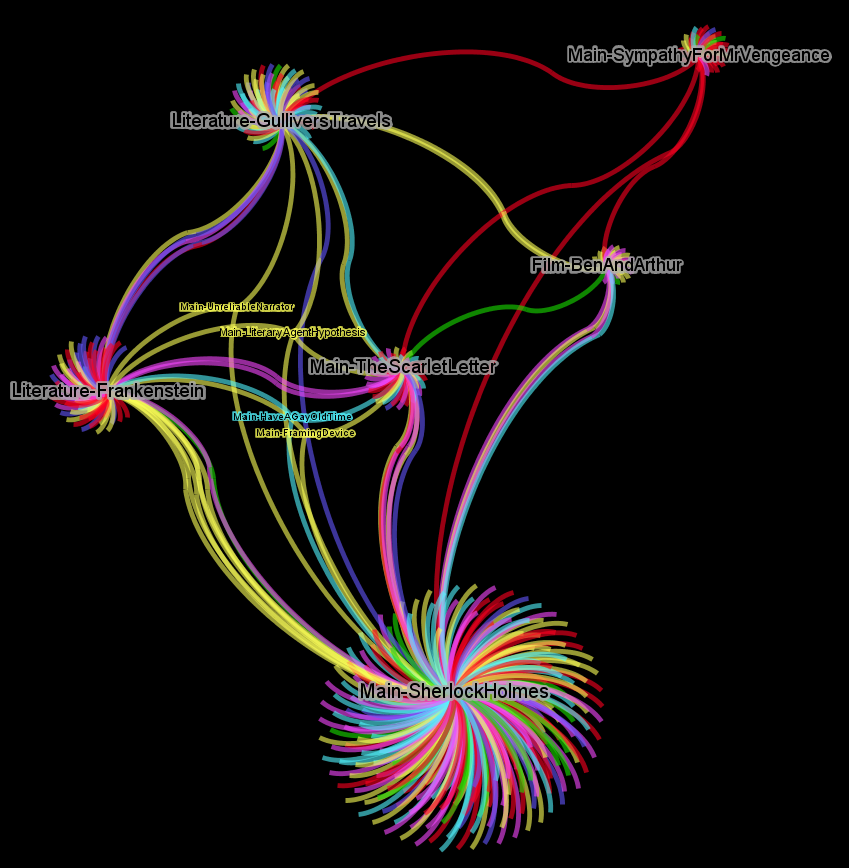
Joining JRAAS has instilled in me a newfound curiosity to delve into Digital Humanities projects that speak to my interests and, in my research, I have found “TV Tropes-The Weird Geometry of the Internet” developed by Elijah Meeks, a data visualization expert, at Stanford University. The project aims to create visual network representations, to illustrate connections between tropes, recurring plot devices, and works. By “mapping” out how tropes are linked to works and how the latter are connected through shared tropes, the aim is to analyze the thematic and narrative structures present in different media.
The challenge is the difficulty of allowing users an interactive approach, precisely because of the data’s large dimensions. However, here is an attempt made up of the 148 most central indices, works, and tropes using the gexfjs library. Because of TV Tropes’s vast network, Meeks turns to other methods to better explore and interpret data, such as modularity, allowing us to identify specific interconnected trope “communities '.
This way, Meeks divides these communities into “neighborhoods” such as Video Games (Green) – originally “Overcompensation”- so think of works that give the audience exactly what the title suggests like Buffy, the Vampire Slayer or Lampshade (Teal) – Originally “A Very TV Tropes Movie”, encapsulating medium awareness. Friends often did this- in Season 6, Episode 8, “The One with Ross’s Teeth”, the cold open features the One Hour Work-Week trope, where the characters complain about how their bosses don’t seem to like them and Joey (Matt Leblanc) retorts with “Maybe it's because you're in a coffee shop at 11:30 on a Wednesday morning?”.

Through these neighborhoods, Meeks ranks works on TV Tropes based on their thematic makeup and identifies the 50 most similar works based on shared tropes and percentages indicating their degree of similarity. For instance, I was amazed to find that Mary Shelley’s Frankenstein shares more tropes with the Planet of the Apes- 10 in total- than with the Bride of Frankenstein film- 6 tropes in total. As seen in Figure 2, the great majority of shared tropes and links fall into Id (Purple); Supernatural (Blue); Meta (Yellow), and Traditional (Red) categories.

It’s peculiar results like these are worth exploring more in-depth: questioning just how different narrative motifs “travel” across multiple genres. Research like this invites further questions like how the analysis of shared tropes can inform us of the evolution of storytelling across different forms of media over time or to what extent fan culture influences trope categorization.
As someone who consumes multiple forms of media, everything from literature and cinema to video games, I was drawn to this fascinating approach to tropes, allowing me to explore connections across media I wouldn’t otherwise have ever thought about.
